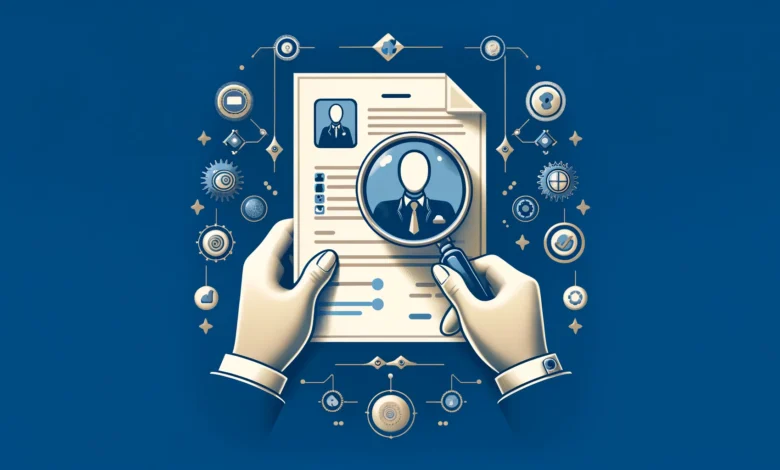Spotting AI-Generated Content: A Comprehensive Guide to Modern Detection Techniques

The analysis of language, structure, and details of a given work aids in determining whether or not a work is AI-generated. Significant methods include linguistic analysis and other forms of AI-metic data analysis, which look for non-idiomatic expressions or excessive repetition. Use of context and relevance: Experts also look for logic holes one would expect from a machine instead of a human. Because technology is continuously improving, it is critical to monitor detection systems to validate works, comply with transparency frameworks, and build trust in communication technology systems.
Introduction
Artificial intelligence reshapes how content is created and consumed in today’s digital ecosystem. The increase in AI-generated text spans across blogs, articles, scripts, and even books, pushing the boundaries of what we consider humanly possible in content creation. However, this surge comes with a challenge: discerning between human and AI-produced content. Tools like the Best AI Detector Tool assist in this task, offering a sophisticated way to ensure the integrity and credibility of information being shared across various sectors.
Identifying AI-generated material is particularly important in industries that rely on accuracy, such as journalism, education, and online publications. As automated systems refine their capacities to replicate various writing nuances, detection tools’ importance in preserving content’s genuineness escalates substantially. The effort to identify AI content is not only a matter of technique but also one that seeks to defend the credibility of information within society.
The Rise of AI in Content Creation
AI technology is not a passing craze but rather a phenomenon set to influence a myriad of industries across the globe. It is impressive how AI algorithms can analyze much information and yield useful, organized outputs. Research suggests that nearly 30% of all digital content worldwide today is or has been AI-assisted, signifying immense proportions of acceleration in adoption rates. As a digital phenomenon, AI can generate social media posts and research paper documents, underscoring its versatility. AI has progressed significantly. The ability of businesses and individuals to utilize AI creates the challenge of clearly understanding the scope of its power, especially for evaluating relevance, accuracy, and authenticity in content.
Why Detecting AI-Generated Content is Crucial
The implications of AI permeating content creation are both fascinating and concerning. While AI enables unprecedented efficiency and volume in producing content, it compromises the essence of human creativity and judgment. Unchecked AI-generated content poses risks ranging from the spread of misinformation to ethical concerns regarding intellectual property and accountability.Take journalism as an example; blending stories and information presents numerous challenges. Every part of a report, including the observations and insights, requires utmost authenticity. Not identifying AI-generated information causes an erosion of trust, ethics, and values in storytelling. Understanding the ‘why’ is essential in this context—maintaining and preserving every content’s authenticity and intention.
Current Techniques for AI Detection
Understanding Linguistic Patterns
Linguistic analysis is a cornerstone in detecting AI-generated content. AI text typically displays specific hallmark characteristics—structured language, repetitive phrasing, and often a lack of nuanced human emotion. These features can be stark indicators of non-human authorship. Linguists and computer scientists focus on these elements to develop techniques that flag potentially AI-written text, which is essential in maintaining text integrity and authenticity.
Machine Learning Algorithms
Developing machine learning algorithms has dramatically strengthened the capacity to identify AI-generated content. These algorithms examine big datasets to find trends and anomalies related to AI writing. They continuously learn and adapt, refining their accuracy and reliability in detecting AI text. This advancement is pivotal in keeping pace with the sophisticated nature of content produced by AI technologies, and its continuous development is integral to its success.
Tools and Technologies for Content Detection
Tool 1
Numerous tools now exist to assist in the detection of AI-generated content. Many incorporate itemized pattern recognition, carefully analyzing text for signs indicative of AI generation. Such features enable these tools to ensure the content presented to end-users is genuine and reliable. They offer organizations the peace of mind that their published materials uphold the organization’s credibility and the accuracy demanded by readers and relevant audiences alike.
Tool 2
Additionally, tools focused on analyzing specific sentence structures and word choices provide insights into whether the content may be AI-generated. These advanced resources, continually updated with innovative features, serve to protect not only academic integrity but also digital marketplace authenticity. As detection tools evolve, their integration into regular content verification processes becomes increasingly vital to sustaining their effectiveness against the dynamic intricacies of AI content generation.
Challenges in AI Content Detection
Despite notable advancements, the challenge of identifying AI-generated content persists. The power of AI continues to pose challenges, especially with the vast amount of information available on the Internet. As AI technology evolves, it becomes increasingly sophisticated, which means that natural systems that attempt to understand and process human language face an uphill battle. These obstacles, however, fuel progress toward creating modern, reliable, and thorough verification systems that are constantly adapting and evolving.
The Future of AI Detection Tools
Looking toward the future, AI detection tools are expected to be more advanced than prior versions. New developments in real-time analysis and tool embedding within content management systems promise future evolutions. Maintaining an equilibrium between creating and detecting AI-generated content is essential in fighting the erosion of trust and authenticity in the digital realm. Further advances in detection technologies will increasingly result from the cooperation of machines and human supervision to ensure the required confidence in the information age is upheld.
Conclusion
Detecting AI-generated content is a technological challenge and a new aspect of digital literacy. With the advancement of technology, users can maintain a certain level of accuracy and trustworthiness in media, upholding these standards. It is essential to monitor such practices as technology’s contribution to information increases so that guidance and data accurately represent human thought and innovation.
Additional Resources
This insightful article offers an in-depth perspective on how AI influences modern media for readers interested in exploring the ethics and implications of AI-generated content.



